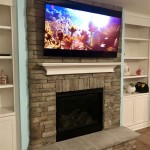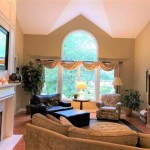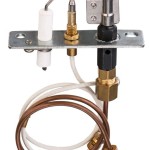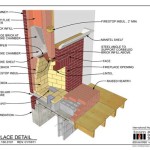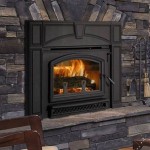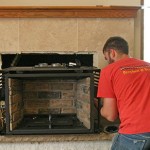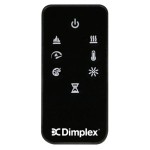Custom Cast Iron Fireplace Grates: Enhancing Functionality and Aesthetics
The fireplace, a traditional focal point of many homes, offers warmth, ambiance, and a sense of comfort. Integral to the efficient and safe operation of a fireplace is the grate, which elevates the firewood and facilitates air circulation for optimal combustion. While mass-produced fireplace grates are readily available, custom cast iron fireplace grates provide a compelling alternative, offering tailored dimensions, enhanced durability, and the opportunity to integrate unique design elements. This article explores the benefits of custom cast iron fireplace grates, examining their construction, advantages, and the factors to consider when commissioning a bespoke grate.
Understanding the Role of a Fireplace Grate
Before delving into the specifics of custom cast iron grates, it’s important to understand the functional requirements of a fireplace grate. Its primary purpose is to lift the firewood off the floor of the firebox. This elevation allows air to circulate freely beneath the wood, promoting more complete and efficient combustion. Without a grate, firewood tends to smolder and produce excessive smoke, leading to incomplete burning and creosote buildup in the chimney. Furthermore, a grate concentrates the fire, preventing it from spreading uncontrollably within the firebox. This containment improves safety and allows for better heat management. The design of the grate, including the spacing between the bars and the overall shape, significantly influences its performance. A well-designed grate provides adequate airflow, maximizes heat radiation, and contributes to a cleaner burn.
The Advantages of Cast Iron
Cast iron is a ferrous alloy known for its exceptional heat resistance, durability, and ability to retain and radiate heat. These properties make it an ideal material for fireplace grates. Unlike lighter materials, such as steel, cast iron can withstand the high temperatures generated within a fireplace without warping or degrading. Its high thermal mass allows it to absorb and radiate heat evenly, contributing to a more consistent and comfortable warmth. Moreover, cast iron grates are inherently robust and can withstand the physical stress of supporting heavy loads of firewood. The longevity of cast iron is another significant advantage; properly maintained cast iron grates can last for decades, providing a long-term solution for fireplace functionality. Finally, the inherent aesthetic qualities of cast iron, with its textured surface and traditional appeal, can enhance the visual appeal of the fireplace.
Benefits of Choosing Customization
While standard-sized fireplace grates may suffice for some installations, opting for a custom cast iron fireplace grate offers numerous benefits. The most significant advantage is the ability to tailor the grate’s dimensions to perfectly fit the existing firebox. This precise fit maximizes the grate's efficiency in cradling the firewood and promoting airflow. A custom grate ensures that the entire burning surface is utilized effectively, preventing firewood from rolling off the grate or interfering with the fireplace damper. Furthermore, customization allows for the incorporation of specific features tailored to individual needs and preferences. For example, the spacing between the bars can be adjusted to accommodate different sizes of firewood. The grate's overall shape can be modified to optimize airflow based on the fireplace design. Customization also opens the door to incorporating decorative elements, transforming the grate from a purely functional component into an aesthetic enhancement.
Ensuring a Perfect Fit: Measuring Your Fireplace
Accurate fireplace measurements are paramount to ensure that a custom grate functions properly and fits seamlessly within the firebox. Precise measurements are crucial for optimal performance and safety. Key dimensions to consider include the width of the firebox opening, the depth of the firebox from front to back, and the height of the firebox. Ideally, the grate should be slightly narrower than the firebox opening to allow for easy installation and removal. The depth of the grate should correspond to the depth of the firebox to maximize the burning surface and prevent firewood from protruding into the room. It's equally important to consider any irregularities in the firebox shape. Some fireboxes may have angled sides or uneven surfaces, which must be accounted for in the grate design. Taking multiple measurements at different points within the firebox is recommended to ensure accurate representation of the dimensions. This data will enable the foundry or metalworker to create a grate that fits snugly and functions effectively.
Custom Grate Design Considerations
Beyond the dimensional aspects, the design of a custom cast iron fireplace grate can significantly impact its performance and aesthetic appeal. Several design elements should be carefully considered during the commissioning process. The spacing between the bars, often referred to as the bar spacing, determines the airflow beneath the firewood. Wider spacing promotes greater airflow, which is beneficial for burning larger pieces of wood. Conversely, narrower spacing is more suitable for smaller pieces of wood, preventing them from falling through the grate. The angle of the bars can also influence airflow and the way the firewood burns. A sloped grate can help to concentrate the fire and promote more even burning. The shape of the grate can be customized to match the style of the fireplace or to accommodate specific design preferences. For example, a curved grate can add a touch of elegance, while a rectangular grate provides a more traditional look. Finally, decorative elements, such as scrolls, emblems, or intricate patterns, can be incorporated into the grate design to enhance its visual appeal and create a personalized touch. It is crucial to collaborate closely with the foundry or metalworker to translate design ideas into a functional and aesthetically pleasing grate.
Selecting a Foundry or Metalworker
The selection of a qualified foundry or metalworker is a critical step in the process of commissioning a custom cast iron fireplace grate. Expertise in cast iron fabrication is essential to ensure that the grate is manufactured to the highest standards of quality and durability. Look for a foundry or metalworker with a proven track record of producing custom metalwork, particularly cast iron components. Review their portfolio of past projects to assess their design capabilities and technical expertise. It is also important to ensure that the foundry or metalworker uses high-quality materials and employs proper casting techniques. Ask about the type of cast iron they use and the methods they employ to ensure consistent quality and dimensional accuracy. Effective communication is also crucial for a successful custom project. The foundry or metalworker should be willing to discuss your design ideas, answer your questions, and provide guidance on the best approach for achieving your desired outcome. Obtaining quotes from multiple sources is advisable to compare pricing and services offered. However, price should not be the sole determining factor. Prioritize quality, experience, and a commitment to customer satisfaction.
Maintenance and Care
While cast iron is inherently durable, proper maintenance and care can extend the life of a custom fireplace grate and preserve its aesthetic appeal. Regular cleaning is essential to remove ash and soot buildup, which can corrode the metal over time. Use a wire brush or scraper to remove loose debris from the grate after each use. Avoid using harsh chemical cleaners, as they can damage the cast iron's surface. For more stubborn buildup, a mixture of mild soap and water can be used to gently scrub the grate. After cleaning, ensure that the grate is completely dry before using the fireplace again. Moisture can accelerate corrosion and weaken the metal. Periodically inspecting the grate for signs of damage, such as cracks or warping, is also recommended. Address any issues promptly to prevent further deterioration. If cracks are detected, consult with a qualified metalworker to determine if the grate can be repaired or if replacement is necessary. With proper care, a custom cast iron fireplace grate can provide years of reliable performance and enhance the beauty of your fireplace.
Cost Considerations
The cost of a custom cast iron fireplace grate can vary significantly depending on several factors, including the size of the grate, the complexity of the design, the type of cast iron used, and the location of the foundry or metalworker. Generally, custom grates are more expensive than mass-produced grates due to the individualized design and manufacturing process. Simple designs with minimal detail will typically be less expensive than complex designs with intricate patterns or decorative elements. The type of cast iron used can also affect the cost. Higher-grade cast iron with enhanced heat resistance and durability may command a higher price. Labor costs also play a significant role in the overall cost. The more time and skill required to fabricate the grate, the higher the price will be. Obtaining multiple quotes from different foundries or metalworkers is essential to compare pricing and identify the best value. Be sure to inquire about all associated costs, including design fees, material costs, fabrication charges, and shipping expenses. While cost is an important consideration, prioritize quality and expertise to ensure that you receive a durable and aesthetically pleasing grate that will provide years of reliable service.
Installation Guidelines
Installing a custom cast iron fireplace grate is typically a straightforward process that can be completed without professional assistance. However, it is important to follow basic safety precautions and ensure that the grate is properly positioned within the firebox. Before installing the grate, ensure that the fireplace is clean and free of any debris. Remove any existing grates or fireplace accessories. Carefully lift the custom grate and position it within the firebox, ensuring that it is centered and evenly supported. The grate should sit flat on the floor of the firebox, with sufficient clearance around the sides to allow for airflow. Avoid placing the grate too close to the fireplace damper, as this can obstruct airflow and reduce the efficiency of the fireplace. Double-check the grate's stability and ensure that it will not rock or shift when loaded with firewood. If necessary, shim the grate with small pieces of metal or stone to level it. Once the grate is securely in place, it is ready for use. Always exercise caution when loading firewood onto the grate, and avoid overloading it. Proper installation will ensure that the grate functions safely and efficiently, providing years of reliable performance.

Fireplace Grates For Wood Burning Fireplaces

Custom Personalized Fireplace Grate

Decorative Vertical Fireplace Grates Grate Wall Of Fire

Fireplace Grates Steel Cast Iron Custom Sizes Woodland Direct

24 Inch Fireplace Grate Cast Iron Log Rack Heavy Duty Steel Holder 3 4 Bar Fire Grates Wrought Wood Stove Firewood Burning For Indoor Outdoor Chimney Com

Panacea 4012674 Graphite Black Cast Iron Fireplace Grate Com

Cozy Living Room With Morris L Armchair

Singlyfire Fireplace Grate 21 Inch Cast Iron Log Rack Heavy Duty Steel Holder 3 4 Bar Fire Grates Wrought Wood Stove Firewood Burning For Indoor Outdoor Chimney

Firebacks 500 Charles Nijman Fireplace Antiques

Mountain Cabin Fire Screen With Door Plow Hearth
Related Posts

